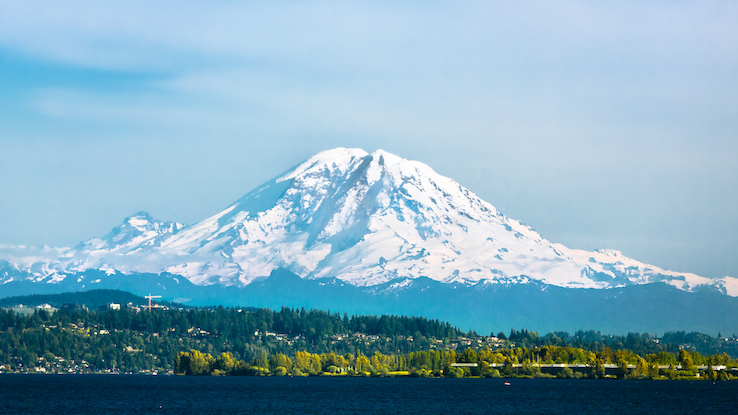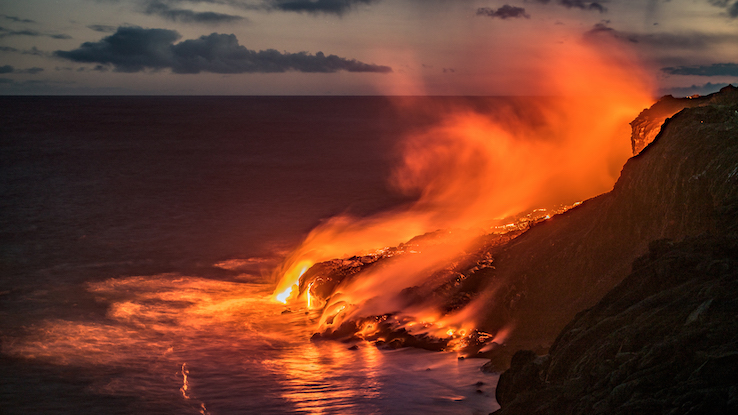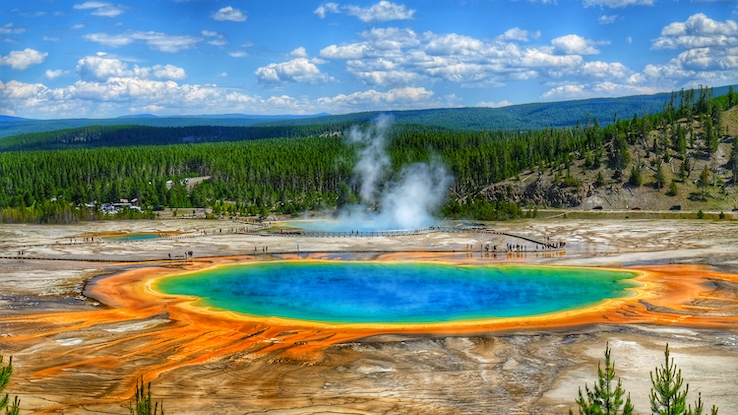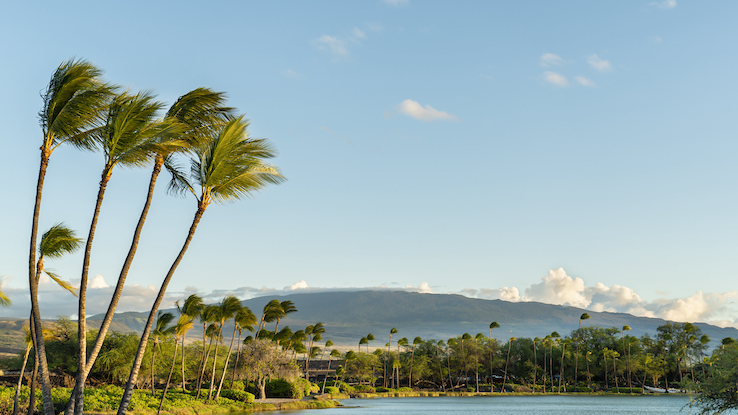
Most of us have only seen the amazing power of a volcanic eruption in movies. But did you know that there are approximately 169 volcanoes in the United States that scientists consider active?
Some feature spectacular consistently flowing lava, while others seem to be in a state of hibernation. Read below to find out where some of the most famous volcanoes in the United States are located. We’ll also look at their benefits, when they last erupted, and whether they’re in danger of staging a repeat performance any time soon.
What Are the Benefits of Volcanoes?
Volcanoes can be destructive, but they also provide some incredible benefits. Some of the most amazing things they offer include the advantages listed below.
- As lava spills out – especially in areas surrounded by water – it creates new land formations.
- Many raw materials are found in the areas surrounding erupted volcanoes. Those materials include everything from gold and copper to materials needed to form bricks for building projects.
- After a volcano erupts and the lava cools, it begins to break down into the surrounding soil. Over time, it creates incredibly fertile soil for crops.
- Eruptions release ash and compounds that can help combat global warming.
- Both steam and magma from volcanic eruptions produce a large portion of our water supply.
Kilauea – Hawaii
Native Hawaiian lore holds that Kilauea is the home of the volcano goddess Pele. Whenever Kilauea erupts, Hawaiian legend says that Pele is expressing her displeasure. Judging by the volcano’s track record, Pele is not an easy deity to please.
Located on Hawaii’s Big Island, Kilauea is among the most active volcanoes in the country. It sometimes continually erupts for decades at a time, though these eruptions are often harmless. But it’s prone to violent eruptions, such as the one that occurred in 2018. Many scientists take advantage of Kilauea’s activity to study the environmental impacts it has on the surrounding ecosystem.

Mount St. Helens – Washington
Mount St. Helens is an active volcano in Washington State. Its infamous 1980 eruption is considered the most destructive in the history of the United States. It claimed 57 lives and wiped out 90 square miles of surrounding forest habitat. Fortunately, the landscape was eventually able to make a comeback. Scientists report that some of the ecosystems destroyed in the eruption are now among the most thriving in the Mount St. Helens region.
Mount Shasta – California
Mount Shasta is an active volcano that sits right along the border of California and Oregon. Scientists believe the volcano tends to erupt every 3,000–5,000 years or so. They believe that the last eruption in which magma reached the surface was around 3,200 years ago. However, there have been instances since then when it nearly reached the surface.
Mount Rainier – Washington
Washington State’s Mount Rainier is a stratovolcano built by many layers of lava that hardened over time. Scientists believe that its most recent eruption took place around 1,000 years ago. However, the surrounding area experiences several small earthquakes a year due to seismic activity.
Today, Mount Rainier is a popular tourist attraction. It’s known for its amazing snowsports opportunities and the hiking trails traversing its gorgeous surrounding landscape.

Yellowstone Supervolcano – Wyoming
While Yellowstone National Park is known for its natural beauty, geysers, and hot springs, much of the park sits atop a massive, active supervolcano. Scientists believe its last eruption happened over 640,000 years ago when Yellowstone’s famous caldera was formed.
It may be mindblowing to think of enjoying a picnic atop a huge underground volcano. But the magnetic heat flowing beneath Yellowstone is also responsible for the famous geysers and other natural wonders that attract many people to the park today.
Mount Redoubt – Alaska
Mount Redoubt is a towering stratovolcano and majestic headliner of the Chigmit Mountains of Alaska’s Lake Clark National Park and Preserve. Despite its beauty, Mount Redoubt is not only active but has erupted on a fairly regular basis over the last century.
Between December 1989 and April 1990 alone, Mount Redoubt racked up an impressive 23 major explosive events. Redoubt’s last major eruption occurred in 2009, with an eruptive phase that lasted several months.
Mount Hood – Oregon
Oregon’s Mount Hood is a 500,000-year-old volcano that remains active. Mount Hood tends to be pretty selective about its eruptions, however, generally spacing them out for centuries.
Its last known eruption took place in the 1790s, just before Lewis and Clark first arrived in the area on their famed expedition. Before that, its last known eruption was over 1,500 years ago and managed to push the entire Columbia River northward.
Mauna Loa – Hawaii
Mauna Loa claims the title of the largest active volcano on the face of the earth. Its name means “long mountain” in Hawaiian and couldn’t be more fitting. Not only is the volcano located in Hawaii, but it makes up roughly 51% of the islands.

Though much of the volcano is hidden underwater, it’s actually higher than Mount Everest and bends the ocean floor beneath its massive weight. Mauna Loa is currently in the midst of its longest quiet stage in written history, after its last major eruption in 1989. Before that, it had generally erupted at least once every five years since 1843. Its frequent eruptions have come with the silver lining of increasing the landmass of the islands and creating their notoriously rich soil.
Lassen Peak – California
Lassen Peak is located in Northern California’s Lassen Volcanic National Park, which claims the rare honor of featuring each of the four types of volcanoes found on earth (shield, composite, cinder cone, and plug dome.) Lassen Peak is of the plug dome variety and last erupted from 1914 to 1917.
Three Sisters – Oregon
Oregon’s famous “three sisters” are a trio of towering volcanos located in the Cascade Volcanic Arc. Known to fans as Faith, Hope, and Charity, the volcanoes are a favorite destination for climbers and tourists.
As far as eruptions go, the sisters have been relatively quiet since their last eruption 2,200 years ago. Though they do remain active and have been behind an uptick in small earthquakes of late, scientists believe they would be showing far more threatening signs if they were planning to erupt any time soon.






